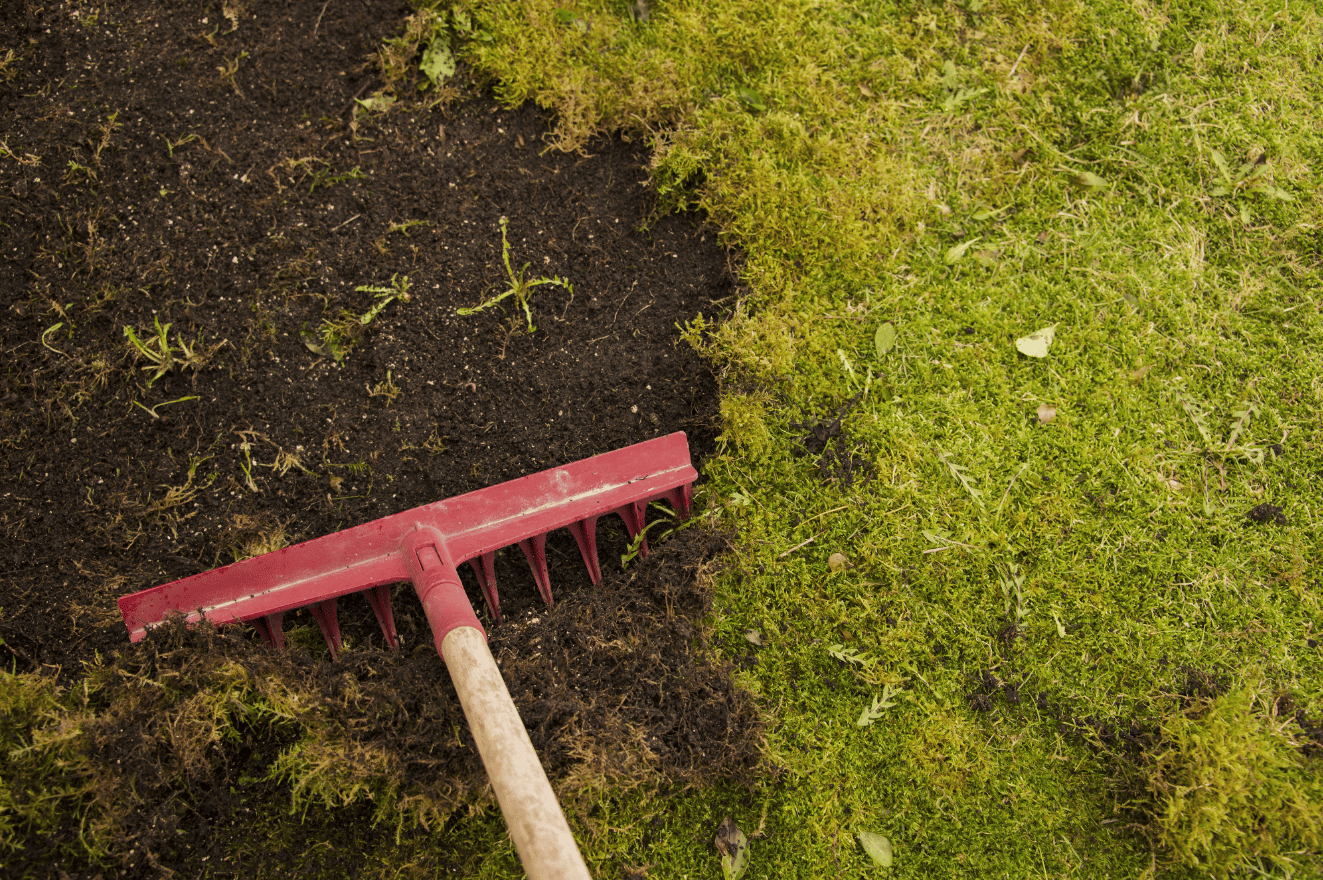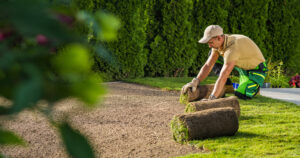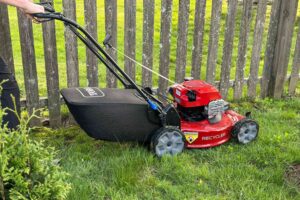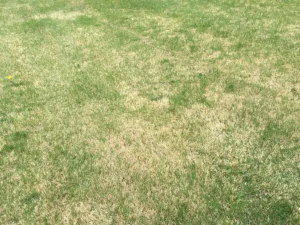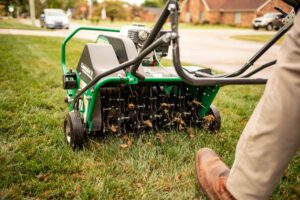How to Get Rid of Moss in Your Lawn: A Complete Guide
Discovering patches of moss spreading across your lawn can be frustrating for any homeowner. This velvety green intruder competes with grass for space and nutrients, often indicating underlying issues with your lawn’s health. Moss thrives in moist, shady conditions with poor air circulation, compacted soil, and acidic pH levels – essentially the opposite of what your grass prefers. The good news is that with the right approach, you can eliminate moss from your lawn and prevent its return.
Why Moss Invades Your Lawn
Before tackling moss removal, understanding why it appears is crucial. Moss doesn’t directly kill grass, but it opportunistically fills spaces where grass struggles to grow. Several environmental conditions create the perfect habitat for moss:
- Excessive shade: Areas receiving less than 4 hours of sunlight daily
- Poor drainage: Consistently damp soil that grass roots can’t tolerate
- Soil compaction: Preventing proper root development and water infiltration
- Acidic soil: pH levels below 6.0 favor moss over turfgrass
- Low fertility: Insufficient nutrients for healthy grass growth
- Improper mowing: Cutting grass too short weakens it against competitors
Addressing these underlying issues is essential for any long-term moss control strategy. Simply removing moss without fixing these conditions guarantees its return, often within weeks.
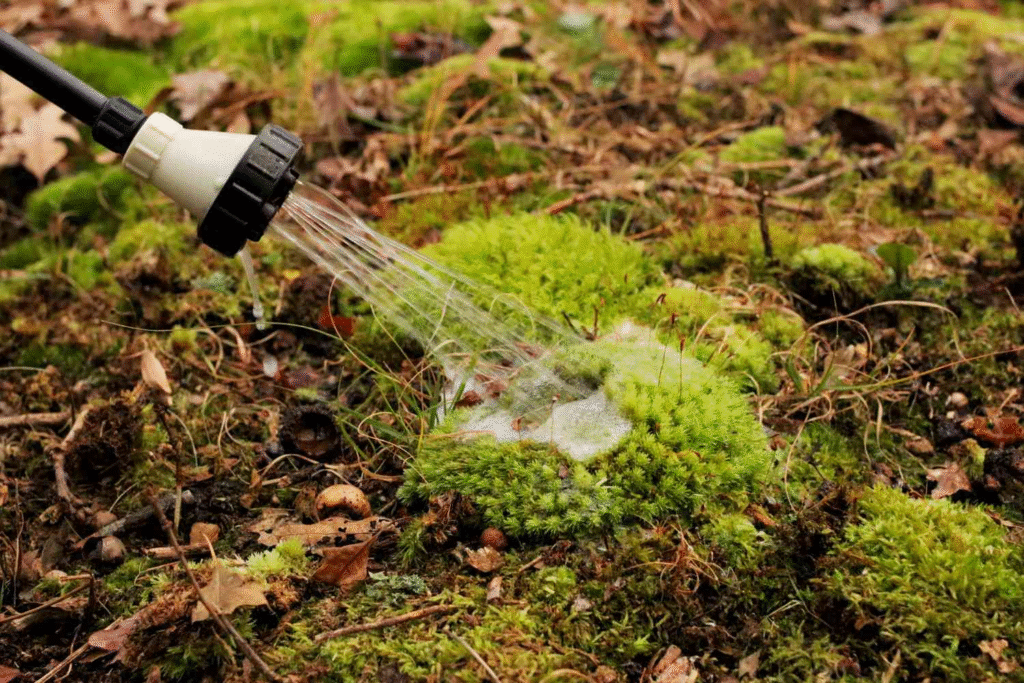
Effective Methods for Eliminating Moss from Your Lawn
Method 1: Manual Removal
For small moss patches, manual removal is often the first step in reclaiming your lawn. Use a dethatching rake or a specialized moss rake to vigorously scrape the moss from your lawn’s surface. Work in multiple directions to loosen all the moss, then rake up the debris. This approach works best when moss growth is limited and as an initial treatment before applying other methods.
Expert Tip: Manual removal works best on dry days when moss is more brittle and separates easily from the soil surface.
Method 2: Chemical Moss Killers
For larger moss infestations, chemical solutions provide more efficient control. Several types are available:
Iron-Based Products
Iron sulfate and ferrous ammonium sulfate products are highly effective at killing moss quickly. These products typically turn moss black within hours, making it easy to identify treated areas. After application, the dead moss should be raked out within 2-3 days. Iron-based products have the added benefit of giving your lawn a deep green color boost.
Common Mistake: Leaving iron powder on concrete or stone surfaces can cause rust staining, so apply carefully and rinse any overspray immediately.
Potassium Salts of Fatty Acids
These biodegradable soap-like compounds break down moss cells on contact. Often marketed as “moss control soap,” these products are environmentally friendly alternatives to traditional chemicals. They work quickly but may require multiple applications for severe infestations.
Zinc Sulfate
Zinc compounds can effectively kill moss while adding zinc to your soil, which many lawns lack. These products are especially useful in areas with zinc-deficient soils but should be used carefully as excessive zinc can harm beneficial soil organisms.
Safety Warning: Always wear gloves and follow label directions when applying any chemical products. Keep pets and children off treated areas until dry or as specified on product instructions.

Method 3: Natural Alternatives for Moss Control
If you prefer avoiding synthetic chemicals, several natural options can be effective:
Baking Soda Solution
Create a solution by mixing 2-3 tablespoons of baking soda per quart of water. Spray directly on moss patches to raise the pH level, making the environment inhospitable for moss growth. This method works best for small areas and may require multiple applications.
Dish Soap Mixture
Mix 2 ounces of dish soap with 1 gallon of water and apply to moss-affected areas. The soap dehydrates moss and breaks down its waxy protective layer. Apply on a dry day when no rain is expected for 24 hours.
Expert Insight: Dawn dish soap is particularly effective because its degreasing properties break down the moss’s protective coating.
Getting Rid of Moss Permanently: The Long-Term Strategy
Removing moss is only half the battle – keeping it from returning requires addressing the underlying causes:
Step 1: Improve Drainage
Poor drainage creates the consistently damp conditions that moss loves. Core aeration can significantly improve drainage by removing small plugs of soil, allowing water to penetrate deeper rather than pooling on the surface. For severely compacted areas, consider installing French drains or regrading to eliminate low spots where water collects.
Professional Tip: Aerate your lawn during the growing season when grass can quickly fill in the holes, typically spring or fall for cool-season grasses and late spring for warm-season varieties.
Step 2: Adjust Soil pH
Most lawn grasses prefer neutral to slightly acidic soil (pH 6.5-7.0), while moss thrives in more acidic conditions. Test your soil pH with a testing kit, then apply lime according to test results to raise the pH. Typically, 40-50 pounds of lime per 1,000 square feet will raise pH by approximately one point, but always follow specific recommendations based on your soil test.
Application Timing: Apply lime in fall for best results, allowing winter precipitation to help it penetrate the soil profile before the next growing season.
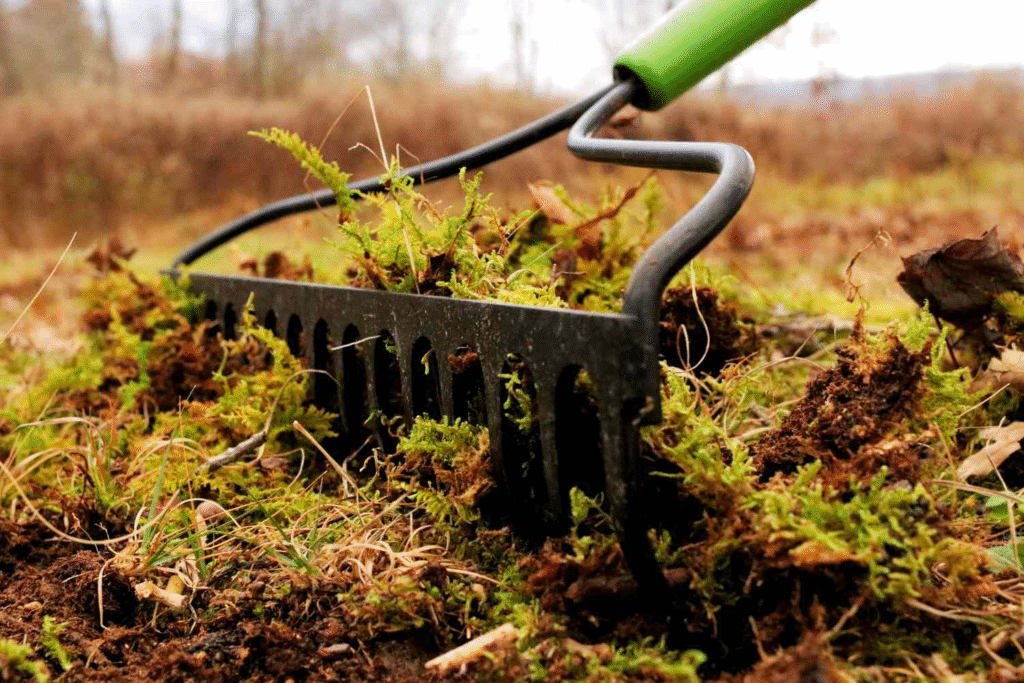
Step 3: Reduce Shade
Prune overhanging tree branches and thin dense tree canopies to allow more sunlight to reach your lawn. Aim for a minimum of 4 hours of direct sunlight daily for most turfgrasses. If creating adequate sunlight isn’t possible, consider replacing grass in heavily shaded areas with shade-tolerant ground covers or creating mulched beds instead of fighting a losing battle.
Design Consideration: When planning new landscapes, keep in mind the mature size of trees and their potential to shade your lawn years later.
Step 4: Improve Air Circulation
Poor air circulation contributes to moss growth by keeping the lawn surface damp. Thin out dense shrubs or hedges that block airflow across your lawn. In enclosed yards, consider installing a decorative fence with gaps or lattice patterns instead of solid barriers.
Step 5: Proper Fertilization
A well-fed lawn competes better against moss. Follow a seasonal fertilization schedule appropriate for your grass type, focusing on slow-release nitrogen sources. Most cool-season grasses benefit from major applications in early fall and spring, while warm-season grasses should receive their primary feeding in late spring through summer.
Environmental Tip: Use phosphorus-free fertilizer unless a soil test indicates a deficiency, as phosphorus runoff contributes to water pollution.
Step 6: Adjust Mowing Practices
Keep grass at the upper end of the recommended height range for your specific variety. Taller grass shades the soil, reducing moisture levels at the surface and making it harder for moss to establish. For cool-season grasses like Kentucky bluegrass or tall fescue, aim for 3-4 inches. For warm-season grasses like Bermuda or zoysia, 1.5-2.5 inches is typically optimal.
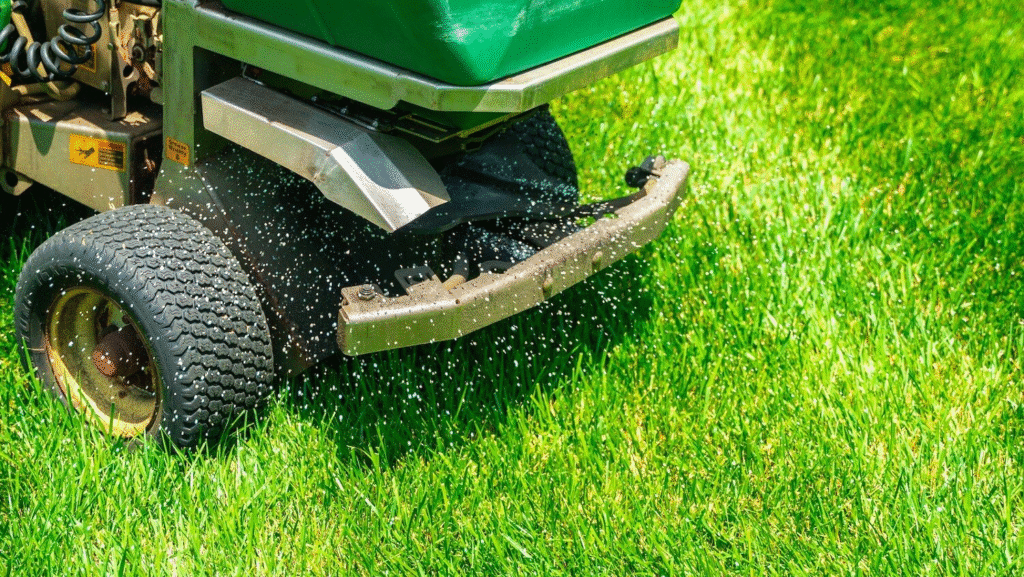
Reestablishing Grass After Moss Removal
Once you’ve eliminated moss, bare patches need to be reseeded to prevent moss or weeds from returning:
- Rake the area thoroughly to remove dead moss and loosen the top layer of soil
- Apply a thin layer of compost or topsoil (¼ inch) to provide a good seedbed
- Choose appropriate grass seed for your climate and the specific site conditions
- Spread seed at the recommended rate, typically 4-5 pounds per 1,000 square feet for most varieties
- Lightly rake to ensure good seed-to-soil contact
- Apply starter fertilizer formulated for new grass
- Water frequently but lightly until germination, then gradually reduce frequency while increasing depth
For chronically damp, shady areas where grass struggles repeatedly, consider alternative ground covers like sweet woodruff, ajuga, or pachysandra that can thrive in moss-friendly conditions.
Seasonal Maintenance Schedule for Moss Prevention
Maintaining a moss-free lawn requires year-round attention:
Spring
- Test soil and apply lime if needed
- Apply moss killer at first signs of moss growth
- Core aerate if soil is compacted
- Overseed thin areas with appropriate grass varieties
- Begin regular mowing at proper height
Summer
- Water deeply but infrequently to encourage deep root growth
- Monitor for signs of returning moss in shady areas
- Maintain proper mowing height, especially during heat stress periods
Fall
- Reduce watering as temperatures cool
- Apply main fertilizer treatment for cool-season grasses
- Prune trees and shrubs to improve light penetration and air circulation
- Apply lime based on soil test results
Winter
- Plan drainage improvements for spring implementation
- Research grass varieties that might perform better in your challenging areas
- Minimize traffic on dormant lawn areas
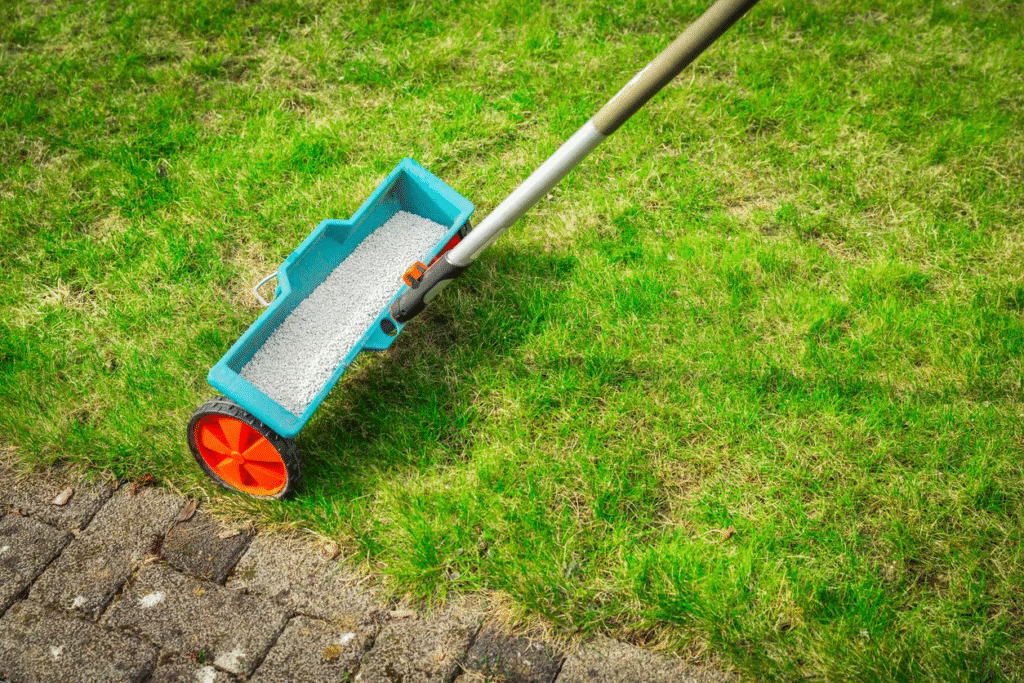
When to Call a Professional
While many moss issues can be resolved with DIY approaches, consider professional help if:
- Moss returns repeatedly despite your best efforts
- Your lawn has severe drainage issues requiring significant grading
- Large trees need pruning that requires specialized equipment
- Soil testing reveals complex nutrient deficiencies
Professional lawn care services can provide specialized equipment for core aeration, dethatching, and precise application of treatments that might be cost-prohibitive for homeowners to purchase for occasional use.
Conclusion: The Best Approach for Long-Term Success
The best strategy for eliminating moss permanently combines immediate removal with addressing underlying causes. While chemical moss killers provide quick results, they’re only temporary solutions if environmental conditions favoring moss persist. Focus on improving drainage, sunlight exposure, soil pH, and overall lawn health to create conditions where grass thrives and moss struggles.
Remember that a thick, healthy lawn is your best defense against moss invasion. Regular overseeding, proper fertilization, and appropriate mowing create a dense turf that leaves little space for moss to gain a foothold.
By taking a comprehensive approach rather than simply treating symptoms, you can transform your lawn from a moss-prone problem area to a lush, green carpet that enhances your home’s beauty and provides a functional outdoor space for years to come.
Have you battled moss in your lawn? Share your experiences and any techniques that proved particularly effective for your situation in the comments below.
